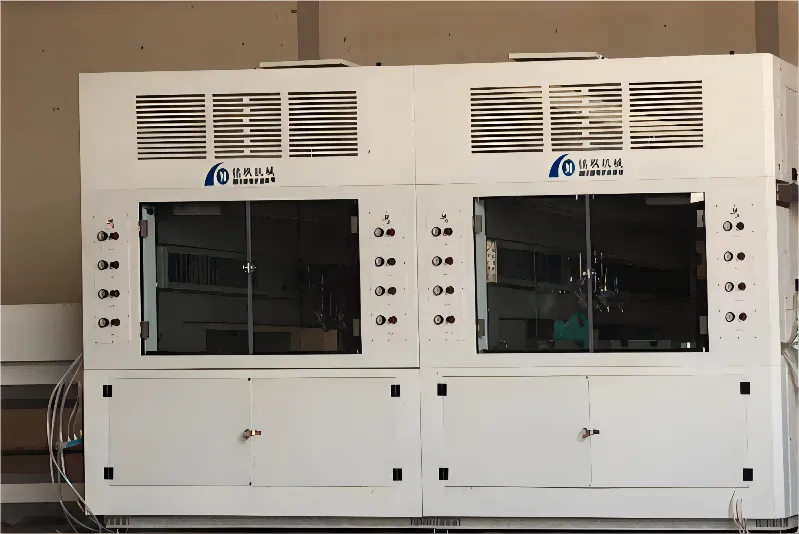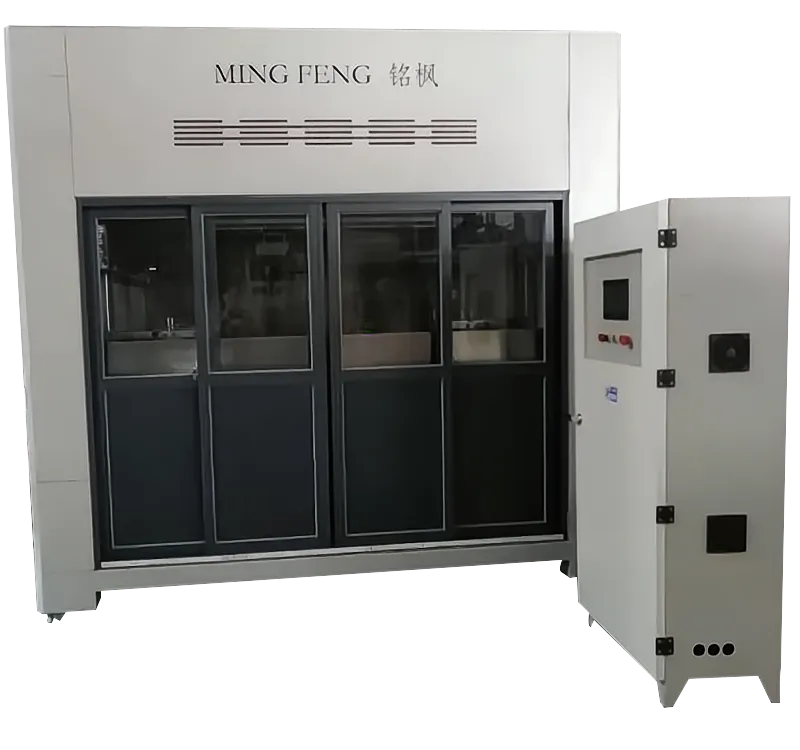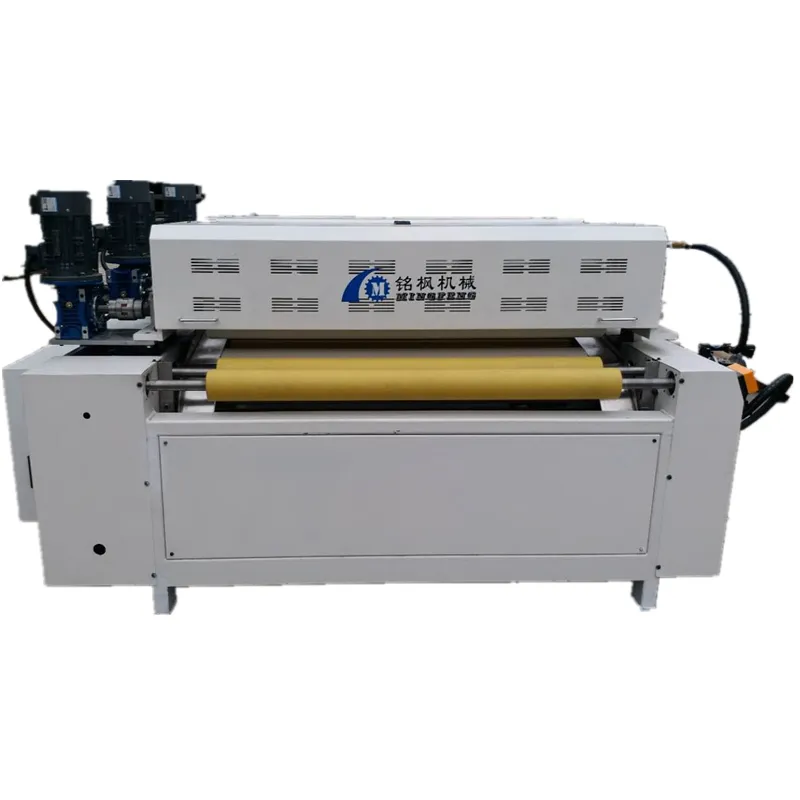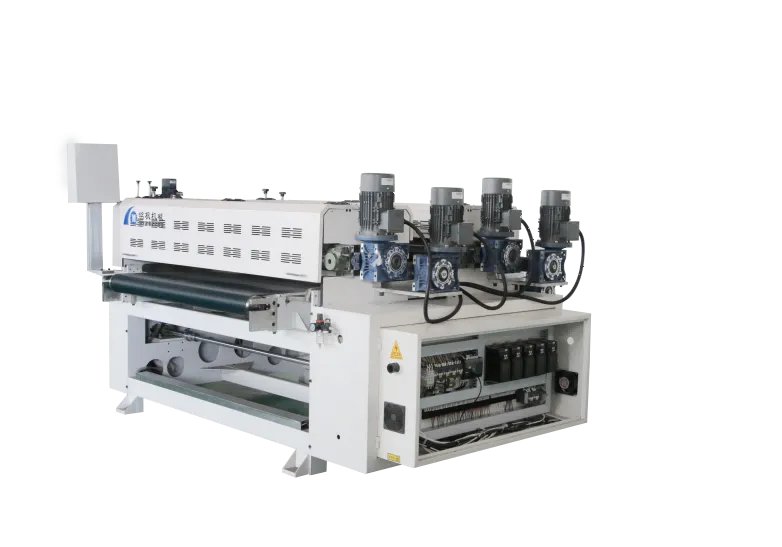In the furniture manufacturing industry, surface coating is a crucial process, directly impacting the product's appearance, durability, and ultimate value. Within this process, roller coating and spray coating are the two primary coating methods. Which method should a factory choose—roller coating or spraying? This isn't just a matter of technical selection; it also affects multiple aspects, including production capacity, cost control, compatible materials, and product positioning.
Especially with the widespread adoption of modern automation technology, automatic painting machines and roller coating machines, as two mainstream equipment types, each have their own core advantages and limitations. Choosing a coating technology solution requires a professional evaluation based on specific production needs, material properties, and finished product requirements.

Roller Coating Vs. Spray Coating: A Comparison of Process Principles
1. Roller Coating (Using a Roller Coating Machine)
Roller coating involves applying paint directly to the workpiece surface using a roller mechanism. A typical roller coating machine utilizes the squeezing force and rotational motion between upper and lower rollers to achieve uniform paint transfer.
Principle:
• The paint flow is controlled by a metering roller;
• The main roller contacts the workpiece, coating the surface with paint;
• Suitable for flat panels or regularly shaped parts.
2. Spraying (using an automatic painting machine)
Spraying involves using a spray gun to atomize the paint into fine particles and spray them onto the workpiece surface. This method can be categorized as high-pressure spraying, low-pressure spraying, or electrostatic spraying. Automatic painting machines use a CNC system to control the spray gun path, enabling automated and precise painting.
Principle:
• The paint is atomized inside the spray gun;
• It is sprayed onto the workpiece at a set pressure;
• It can achieve full coverage of complex surfaces and irregularly shaped parts.
Automatic painting machine: Process characteristics and application range
Automatic painting machines are widely used for furniture parts that require high decorative effects, high surface quality, and complex shapes. Their process characteristics are as follows:
1. Precise control, adaptable to irregularly shaped parts
• CNC automatic painting machines support complex path programming;
• They can spray non-planar structures such as carvings, edges, and cutouts.
2. Uniform atomization for excellent surface finish
• Sprays a thin, even coating;
• Creates a smooth or glossy, highly decorative effect.
3. Wide material compatibility
• Applicable to a variety of substrates, including wood, metal, and plastic;
• Supports a variety of coatings, including UV, water-based, and PU paints.
4. High efficiency, suitable for flexible small and medium-volume production
• Multi-gun system enables simultaneous operation;
• Suitable for personalized customization and high-quality production.

Roller coating machine: Process characteristics and application range
The roller coating machine is designed for efficient and high-capacity coating of flat panels, especially for the initial coating and backing treatment of large batches of standard furniture parts.
1. Thick, uniform coating
• Full coating with extremely smooth finish;
• Ideal for primer coating or sealant application.
2. Suitable for flat workpieces
• Panel furniture, such as doors, tabletops, and cabinet fronts, is primarily suitable;
• Not suitable for irregular shapes or three-dimensional structures.
3. High Efficiency and Low Labor Costs
• Continuous operation, with hourly production capacity reaching over a thousand square meters;
• Ideal for high-capacity assembly lines.
4. High Paint Utilization Rate
• Virtually no overspray waste;
• Much lower paint loss than spraying.

Roller Coating vs. Spray Coating: A Comparison of Coating Results
Items | Automatic painting machine | Roller coating machine |
| 1. Coating thickness control | Thin coating, suitable for multi-layer spraying | Thick coating, strong sealing |
| 2. Surface finish | High gloss and uniformity | Saturated but slightly mechanical feel |
| 3. Coating accuracy | Adaptable to special-shaped parts with high control accuracy | Flat workpiece only |
| 4. Paint utilization | 75%-85% loss, with some overspray loss | >90% efficiency, very low loss |
| 5. Operational flexibility | Programmable control, freely adjustable parameters | Fixed settings, limited adjustment |
| 6. Paint compatibility | Wide range of applications | Mainly suitable for medium-viscosity coatings such as UV and PU |
Roller Coating vs. Spray Coating: Material Compatibility Analysis
1. Materials Supported by Automatic Painting Machines
• Solid wood, MDF, sheet metal, PVC, glass, etc.
• Strong adaptability to curved and irregular shapes.
2. Materials Suitable for Roller Coating Machines
• MDF, medium-density fiberboard, multilayer board, particleboard;
• Primarily standard flat panels; cannot handle three-dimensional edges and corners.
Roller Coating vs. Spray Coating: A Cost and Efficiency Comparison
Metrics | Automatic painting machin | Roller coating machine |
| 1. Initial Equipment Investment | Medium to high | Medium to low |
| 2. Coating Cost per Square Meter | Slightly high due to atomization loss | Low cost, virtually no waste |
| 3. Daily Operation and Maintenance Costs | Spray gun and compressed air system require maintenance | Rollers require regular replacement and cleaning |
4. Hourly Production Capacity | Medium (depending on the number of printheads) | High output (continuous batch coating) |
| 5. Operator Requirements | 1-2 people/machine | Requires one person only |
| 6. Automation Capabilities | Can be connected to an assembly line | Suitable for fully automated production lines |
Roller Coating vs. Spray Coating: How to Choose for Furniture Factories
1. Recommended Applications for Roller Coating Machines:
• High-volume standardized production;
• Workpieces with large, flat surfaces;
• Primary coating applications include priming, sealing, and coloring;
• Targeting paint efficiency and reducing production costs.
2. Recommended Applications for Automatic Painting Machines:
• Product diversity and varying styles;
• Complex structures and unusually shaped carvings;
• Requirement for high-end coating effects, such as high gloss and clear layers;
• Targeting fine decoration and surface quality.
3. Optimal Combination Strategy:
In practice, many medium- to large-scale furniture factories utilize both automatic painting machines and roller coating machines, forming a hybrid coating line with a clear division of labor:
• The roller coating machine first applies the primer and sealer layer;
• After sanding, drying, and cleaning, the automatic painting machine applies the topcoat and decorative coatings.
This configuration ensures high efficiency without sacrificing the decorative qualities of complex products, making it one of the most practical solutions.

Should furniture factories use roller coating or spray coating?
There's no single answer to the question, "Should furniture factories use roller coating or spray coating?" The correct approach should be based on a comprehensive assessment of the following factors:
1. The type and structural complexity of the factory's main products;
2. Daily production targets and automation needs;
3. Finished product surface quality requirements;
4. Paint type and budget considerations.
Automatic painting machines and roller coating machines each have their own unique applications and advantages. Only by thoroughly understanding the equipment's characteristics and scientifically configuring it based on production needs can you achieve the optimal balance between coating efficiency and quality.
What advantages does sourcing from a manufacturer like XMF Machinery offer?
Purchasing directly from XMF Machinery means you deal with the manufacturer and factory, eliminating intermediaries and reducing costs. This ensures low price, high quality, and access to customized configurations tailored to your coatings, materials, and processes. You benefit from direct sales, credible quotes, technical support, and fast parts availability.
